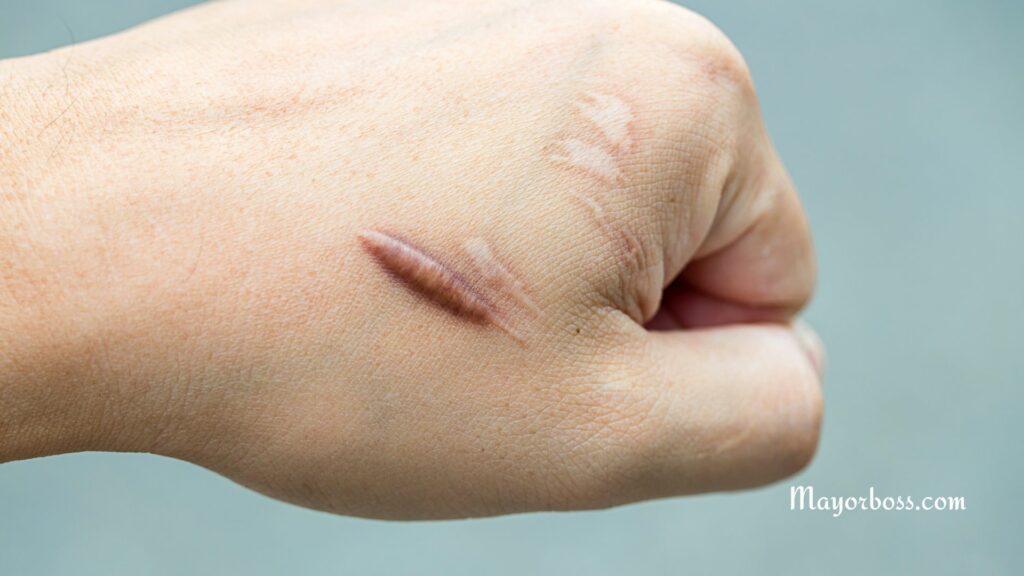How to Get Rid of Keloids
Keloids are raised, thickened areas of scar tissue that form at the site of a wound or incision. Although they’re not harmful, they can be cosmetically unappealing and sometimes uncomfortable. Treatments for keloids range from creams and silicone sheets to more invasive procedures like steroid injections and surgery.
What Are Keloids Anyway?
Keloids are basically your skin’s way of overreacting to an injury. When you get a cut, scrape, or even a pimple, your skin heals by forming a scar. But sometimes, it goes into overdrive and creates a keloid. These can be larger than the original injury and can even keep growing. Unlike regular scars, they don’t fade away over time.

Why Do They Happen?
So you might wonder why some people get keloids while others don’t. Genetics plays a significant role. If your parents or grandparents had keloids, chances are you might get them, too. Additionally, people with darker skin tones are more susceptible to forming keloids. Skin injuries from burns, surgical incisions, or even body piercings can trigger keloid formation.
How to Get Rid of Keloids
Silicone Gel Sheets
One of the simplest methods to treat keloids is by using silicone gel sheets. You place the sheet on the keloid and leave it on for several hours a day. Research suggests that this method can soften and flatten the keloid over time.
Over-the-Counter Creams
There are creams available that claim to reduce keloid scar. Ingredients like onion extract are common in these creams. However, their effectiveness on keloids is a bit of a mixed bag.

Steroid Injections
One of the most common treatments for keloid scar is injecting steroids directly into the scar tissue. This can help to flatten the keloid and reduce redness. However, you’ll likely need multiple sessions to see significant results.
Laser Therapy
Another option is laser therapy, which targets the blood vessels in the keloid. This can help to flatten the keloid and make it less noticeable. However, it can be expensive and may require multiple treatments.
Cryotherapy
In this treatment, liquid nitrogen is used to freeze the keloid. This can reduce its size and soften the texture. However, there’s a risk of skin discoloration, so it’s essential to weigh the pros and cons.
Keloid Removal Surgery
If other methods fail, your last resort might be surgical removal. However, there’s a catch. Surgery can cause a new keloid to form, sometimes even larger than the original. For this reason, surgery is often combined with other treatments, such as steroid injections, to prevent recurrence.
Radiation Therapy
Although less common, radiation therapy can be used after surgical removal to reduce the chances of the keloid returning. This is generally considered a last-resort option due to the potential risks involved.
To Sum It Up
Getting rid of keloids isn’t a one-size-fits-all solution. You might have to try multiple methods or even combine them to see results. Consulting with a healthcare professional can provide you with personalized advice tailored to your situation.
Frequently Asked Questions
What Are the Risks of Leaving Keloids Untreated?
While keloids are generally harmless and non-cancerous, they can cause discomfort or itchiness. Additionally, larger keloids can limit your range of motion if they’re near a joint. Therefore, it’s worth considering treatment options even if the keloid is not causing immediate issues. Besides, getting treatment may help stop your keloid scar from growing.
Can Home Remedies Help in Treating Keloids?
You might come across various home remedies, such as honey, garlic, and apple cider vinegar, that claim to reduce keloids. However, there’s limited scientific evidence to support the effectiveness of these methods.
Are Keloids Contagious?
No, keloids are not contagious. They are a result of your skin’s individual healing process and cannot be spread to others through contact. So you don’t have to worry about transmitting them to someone else or catching them from another person.
Will My Insurance Cover Keloid Treatment?
Insurance coverage for keloid treatment varies widely. Some plans may consider it a cosmetic procedure and, therefore, not cover it, while others might provide partial or full coverage, especially if the keloid is causing functional problems or discomfort. Always check with your insurance provider to determine what’s covered.
How Long Does It Take for Treatments to Show Results?
The time required to see results from keloid treatments can vary widely depending on the treatment method and the individual. For example, silicone gel sheets and creams may take weeks or even months of consistent use to show improvement. Steroid injections and laser therapy usually require multiple sessions spread over several weeks. Patience and consistency are key when treating keloids.
